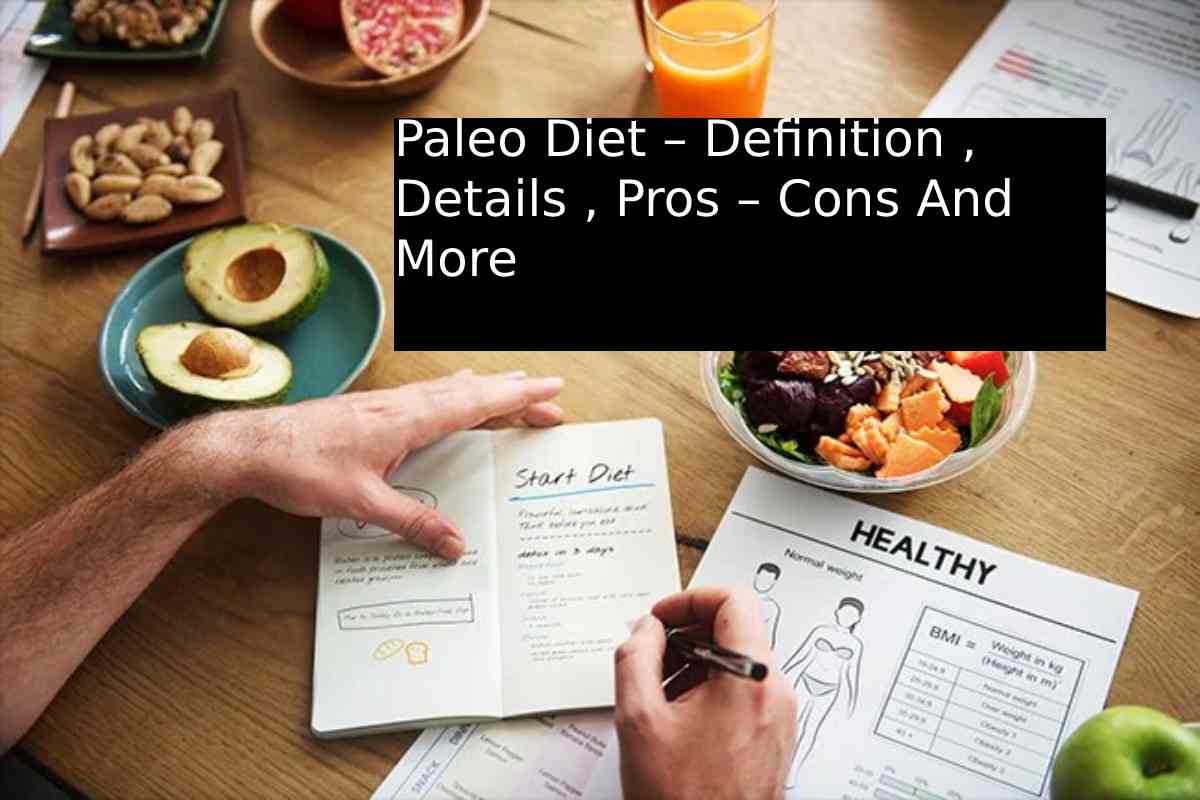Paleo Diet – Paleo means: Eat as naturally as possible, raw and unprocessed. But how does that work today? All information, advantages and disadvantages of the stone age diet.
What Is Paleo Diet?
The term paleo diet comes from English and refers to the Paleolithic – the so-called Old Stone Age.
The Paleo diet is based on the original diet of hunters and gatherers and relies on natural foods.
The idea behind the diet: Our organism has been adapted to this Stone Age food for 2.5 million years – it can therefore digest and utilize this food without any problems.
Why You Might Follow A Paleo Diet
You might choose to go on a Paleo diet since you:
Want to lose weight or keep a healthy weight
Need help planning meals
Details Of A Paleo Diet
Recommendations vary by commercial paleo diet, and some diet plans have stricter guidelines than others. In general, paleo diets follow these guidelines.
What To Eat
fruit
nuts and seeds
Lean meat, especially from grass-fed animals
Fish, chiefly those rich in omega-3 fatty acids like salmon, mackerel
Oils from fruits and nuts, such as olive oil
What To Dodge
Grains such as wheat, oats and barley
Dairy products
Refined Sugar
Salt except organic salt
potatoes
Generally highly processed foods
A Typical Daily Menu
Here’s a look at what you strength eat on a typical day following a Paleo diet:
Breakfast.
Fried salmon and melon.
Having lunch
. Grilled lean pork loin and salad (romaines, carrots, cucumber, tomatoes, walnuts and lemon juice dressing).
Dinner.
Lean beef sirloin, steamed broccoli, salad (mixed leafy greens, tomato, avocado, onion, almonds and lemon juice dressing) and strawberries for pudding.
finger food An orange, carrot sticks, or celery sticks.
The diet likewise highlights drinking water and being physically active every day.
Pros And Cons Of The Paleo Diet
Eating less junk and processed foods is definitely a good resolution.
Another positive is that Paleo adherents cook more themselves because they do not want to eat anything that has already been prepared. The critics of the Stone Age diet doubt that the Paleo diet corresponds to the sedentary lifestyle of modern man.
Scientific Studies On The Paleo Diet
There aren’t many long-term clinical studies on the effects of a Paleo diets. Positive effects on body weight, insulin metabolism and lipid metabolism are currently being discussed.
Paleo And Body Weight:
In a 2-year study, subjects lost a significant amount of fat, particularly in the first year. In addition, your blood lipid levels have improved thanks to the Paleo diet. (Mallberg et al. 2014)
Paleo And Diabetes:
In a small study of 32 participants, a paleo diets combined with regular exercise had positive effects on fat mass and insulin metabolism. Diabetics (type 2) in particular benefit from this, since their intact insulin metabolism can only be rebuilt through conscious nutrition.
Paleo And Fat Metabolism:
Another small study looked at 20 subjects with high cholesterol. With a paleo diets, the subjects were able to significantly reduce cholesterol, LDL cholesterol and triglycerides and thus improve their blood lipid levels.
Paleo- And Metabolic Syndrome:
A meta-analysis showed that a paleo diets has a greater positive influence on the factors of metabolic syndrome (waist circumference, blood lipids, blood pressure, blood sugar) than other diets. However, the methodology of the study has been criticized.
For Whom Is The Paleo Diet Suitable And For Whom Is It Not?
Suitable for:
The Stone Age Diet is suitable for anyone who prefers a diet with a lot of meat, i.e. animal fat, and is willing to spend a lot of money on good, unprocessed food and good meat
For people who react badly to gluten or dairy products
For all people who want to lose weight in the long term
People with diabetes, autoimmune or metabolic diseases (discuss with doctor)
Not Suitable For:
For vegetarians and vegans, this diet could be problematic

